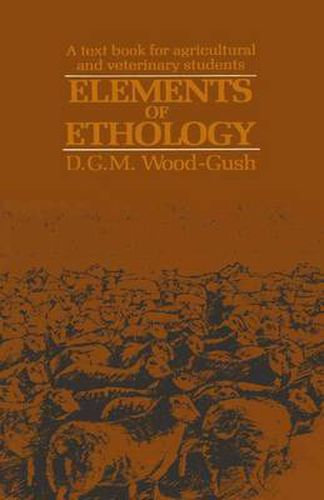Readings Newsletter
Become a Readings Member to make your shopping experience even easier.
Sign in or sign up for free!
You’re not far away from qualifying for FREE standard shipping within Australia
You’ve qualified for FREE standard shipping within Australia
The cart is loading…






This title is printed to order. This book may have been self-published. If so, we cannot guarantee the quality of the content. In the main most books will have gone through the editing process however some may not. We therefore suggest that you be aware of this before ordering this book. If in doubt check either the author or publisher’s details as we are unable to accept any returns unless they are faulty. Please contact us if you have any questions.
The object of this book is to introduce ethology to agricultural and veterinary students. Today ethology covers many approaches to the study of animal behaviour which are connected by one unifying concept: all behaviour must be considered in relation to the ecology and evolutionary history of the species under investigation. This may seem to some to put domesticated animals beyond the scope of classical ethology but, while domestication has involved some behavioural changes, we shall see that much of the behaviour of our species of farm livestock differs little from that of their putative ancestors. It is assumed that students using this book will already have studied some physiology. It is also assumed that they are, essentially, practically minded and with this factor in mind I have discussed behaviour in terms of its function, introducing the principles of ethology within functional categories of behaviour. In order to best illustrate these principles I have taken examples from a variety of species and not confmed myself to farm livestock and domestic animals, for fundamental ethological research with these species has been patchy. However at the end of each chapter I have given a list of papers pertaining to farm livestock so that the principles of ethology can be seen in a more practical context and to develop this approach further I have also added some practical problems for discussion at the end of each chapter.
$9.00 standard shipping within Australia
FREE standard shipping within Australia for orders over $100.00
Express & International shipping calculated at checkout
This title is printed to order. This book may have been self-published. If so, we cannot guarantee the quality of the content. In the main most books will have gone through the editing process however some may not. We therefore suggest that you be aware of this before ordering this book. If in doubt check either the author or publisher’s details as we are unable to accept any returns unless they are faulty. Please contact us if you have any questions.
The object of this book is to introduce ethology to agricultural and veterinary students. Today ethology covers many approaches to the study of animal behaviour which are connected by one unifying concept: all behaviour must be considered in relation to the ecology and evolutionary history of the species under investigation. This may seem to some to put domesticated animals beyond the scope of classical ethology but, while domestication has involved some behavioural changes, we shall see that much of the behaviour of our species of farm livestock differs little from that of their putative ancestors. It is assumed that students using this book will already have studied some physiology. It is also assumed that they are, essentially, practically minded and with this factor in mind I have discussed behaviour in terms of its function, introducing the principles of ethology within functional categories of behaviour. In order to best illustrate these principles I have taken examples from a variety of species and not confmed myself to farm livestock and domestic animals, for fundamental ethological research with these species has been patchy. However at the end of each chapter I have given a list of papers pertaining to farm livestock so that the principles of ethology can be seen in a more practical context and to develop this approach further I have also added some practical problems for discussion at the end of each chapter.